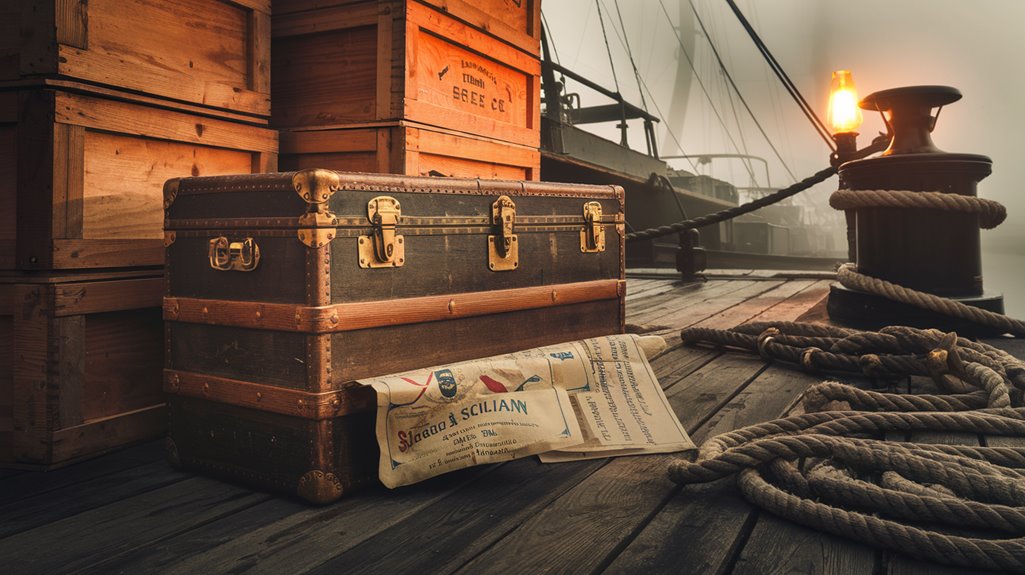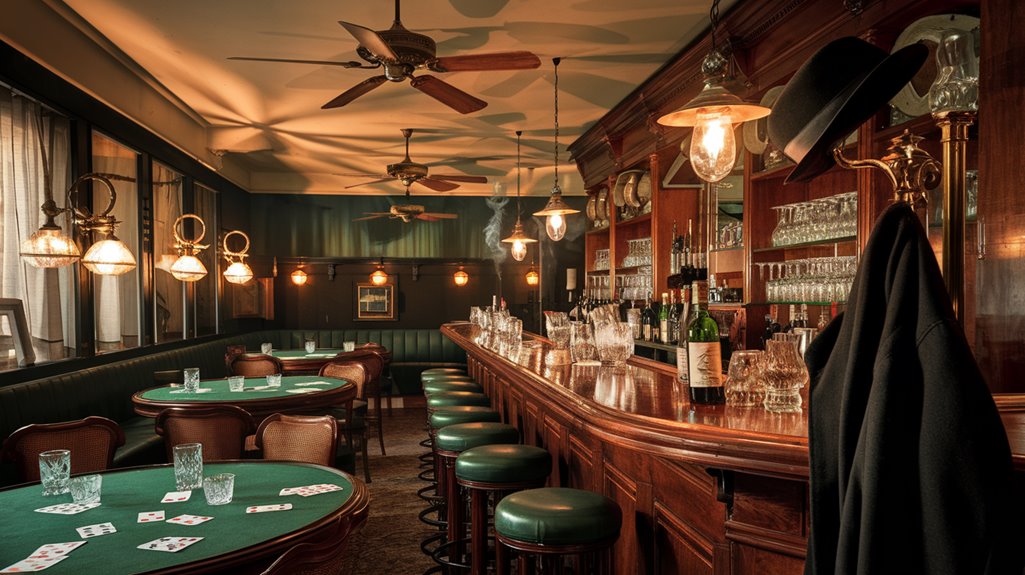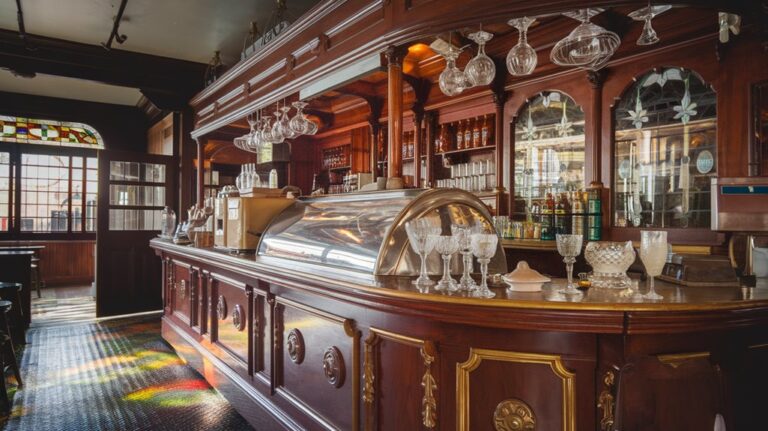Smuggled From Sicily: How the Mafia Took Root in America
While Sicily's sun-baked villages seemed worlds apart from America's bustling cities, their criminal underworld found a perfect home in the New World. You've probably heard of Al Capone and Lucky Luciano, but you don't know the full story of how a rural Mediterranean crime network transformed into America's most powerful criminal empire. The truth behind the Mafia's journey across the Atlantic reveals a complex web of survival, opportunity, and cultural adaptation that changed the face of American crime forever.
From Feudal Fields to American Streets: The Sicilian Origins

Medieval roots shaped the Sicilian Mafia's foundations in ways that would later influence its American evolution.
You'll find that the organization's power grew from Sicily's shift from feudalism to capitalism, as landowners multiplied tenfold between 1812 and 1861.
These feudal dynamics created a perfect storm: weak law enforcement, rampant banditry, and desperate property owners seeking protection.
The Mafia's expertise in agricultural protection, particularly in citrus groves and sulfur mines, became their trademark. They enforced their dominance through a strict "code of silence", which prevented victims and witnesses from cooperating with authorities.
They'd master the art of recovering stolen goods more effectively than police, while establishing protection rackets that would become their business model.
Through violence and intimidation, they created monopolies and gained control over farming communities.
This rural power structure would later serve as their blueprint for expansion into America.
The organization's origins can be traced to medieval Sicily, where they began as rural enforcers for the aristocracy.
First Footprints: Early Mafia Activity in the United States
The Sicilian Mafia's journey to America began in the late 19th century, as waves of Italian immigrants sought refuge from economic hardship in their homeland.
As Sicilian traditions crossed the Atlantic, organized crime followed, taking root first in New Orleans and then spreading to New York City's Italian neighborhoods. The earliest credible records link the first American Mafia presence to the Metrang family in Louisiana. These criminal enterprises eventually expanded to approximately 26 major cities across the United States.
You'll find the early American Mafia's activities centered around three key operations:
- Protection rackets targeting Italian-American businesses
- Sophisticated counterfeiting operations led by crime families like the Morellos
- Complex networks of corrupt officials ensuring their survival
The Mafia's power grew dramatically during Prohibition, when bootlegging provided unprecedented wealth and influence.
Family-based structures, mirroring their Sicilian origins, allowed these criminal organizations to maintain control through loyalty, secrecy, and a strict hierarchical system that would define American organized crime for decades to come.
Building the Empire: Structure and Organization
Inside America's most notorious criminal organization, a sophisticated hierarchy mirrors the corporate world's precision and discipline. At the top, you'll find the boss wielding absolute authority, supported by an underboss and consigliere who help navigate complex decisions.
The power dynamics flow downward through caporegimes, who lead crews of soldiers and associates in daily operations. These criminal enterprises originally stemmed from Italian immigrant groups who brought their illegal operations to American shores.
Membership criteria are strict, with "made" men officially inducted into the family through sacred ceremonies. While associates can come from any background, they'll never hold the same status as full members. The organization operates under a code of silence, with severe consequences for those who break their oath.
The organization's reach extends through various territories, with the Five Families dominating New York City and other families controlling different regions. They've mastered legitimate businesses and labor unions, creating a vast network that's proven challenging for law enforcement to dismantle.
Blood Money: The Rise of Criminal Enterprises
During Prohibition's iron grip on America, organized crime syndicates discovered their most lucrative opportunity yet – bootlegging alcohol for a thirsty nation.
This blood money launched criminal enterprises that would transform into a sophisticated empire of illegal activities.
You'll find the Mafia's economic tentacles reached far beyond simple bootlegging, as they mastered the art of diversification:
- They infiltrated labor unions, extorting millions from businesses while controlling industries like construction and waste management.
- They manipulated Las Vegas casinos, turning desert outposts into gold mines through strategic investments.
- They established international networks for drug trafficking, particularly in the global heroin trade.
Through money laundering and strategic reinvestment in legitimate businesses, the mob transformed their illicit gains into seemingly respectable ventures, cementing their position in America's economic landscape. The criminal proceeds underwent three distinct stages of money laundering – placement, layering, and integration – to disguise their illegal origins.
The Faces of Power: Key Players Who Shaped the American Mafia

Throughout America's criminal history, no organization wielded more influence than the Italian-American Mafia, whose powerful leaders shaped decades of organized crime.
You'll find the most influential figures in Charles "Lucky" Luciano, who revolutionized Mafia leadership by establishing the Commission in 1931, and Carlo Gambino, who became the notorious "boss of bosses" after taking control of what would become the Gambino family.
The five families – Bonanno, Gambino, Genovese, Lucchese, and Colombo – dominated New York's underworld through their strategic operations. These organizations maintained strict loyalty codes among their members to ensure secrecy and control.
Under leaders like Al Capone in Chicago and Paul Castellano in New York, organized crime evolved from basic bootlegging during Prohibition to sophisticated enterprises involving money laundering, extortion, and drug trafficking. Capone's criminal empire reached its peak when he amassed a staggering fortune of $3 billion.
These kingpins' ruthless ambition and business acumen forever changed America's criminal landscape.
The Long Arm of the Law: America's Fight Against La Cosa Nostra
As La Cosa Nostra's influence grew across America in the early 20th century, law enforcement developed increasingly sophisticated methods to combat this criminal empire.
You'll find that the most effective tools in this fight have been the RICO Act, electronic surveillance, and strategic use of informants, enabling authorities to dismantle organized crime from within.
 flexibility and resilience, adapting their operations to evade these law enforcement measures.
flexibility and resilience, adapting their operations to evade these law enforcement measures.
While La Cosa Nostra remains active, particularly in New York City, you can see how these tactics have considerably weakened their grip.
Through international cooperation, asset seizure, and innovative regulatory controls, authorities continue to adapt their approach in this ongoing battle against organized crime.










